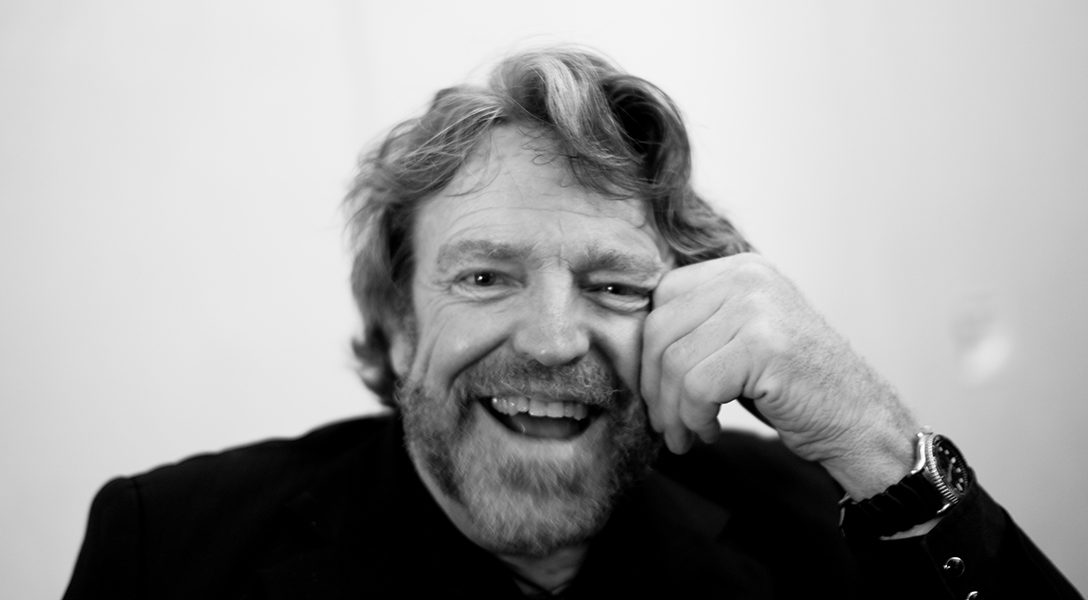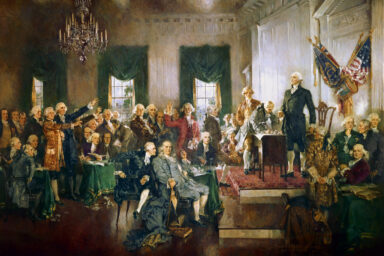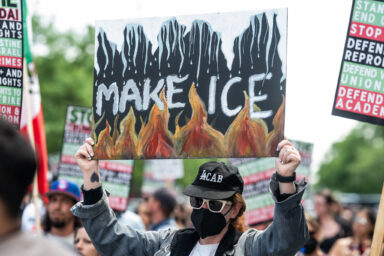John Perry Barlow’s Last Words
Review of 'Mother American Night: My Life in Crazy Times'
John Perry Barlow’s last book, scheduled for June publication, was released for review the day he died. It shines a light on the life of America’s most far-out deadhead.
Mother American Night: My Life in Crazy Times, by John Perry Barlow and Robert Greenfield (Crown Archetype, June 2018).
John Perry Barlow’s sudden death last week shined a spotlight on his high-profile life one last time. His last book, scheduled for June publication, was released for review the day he died. Barlow was a valued member of the WhoWhatWhy Advisory Board, and we review this extraordinary memoir with mixed feelings of sadness for his loss and gratitude for his efforts to keep the internet free.
It was a most uncomfortable feeling to receive and begin reading Mother American Night: My Life in Crazy Times the day John Perry Barlow died. The prologue, “Not Dead Enough,” describes how the book came about but didn’t make it any easier.
Barlow had been dead eight minutes when a young intern yanked him off the bed onto the floor and proceeded to knee him in the chest until his heart reactivated. This, after barely surviving the removal of a huge tumor on his spine, a growth discovered while he was being treated for a horrendous staph infection he got from brand-new cowboy boots. He decided it was time to focus on this book of memoirs.
It contains a chronological stack of stories spread over 47 lightning-quick chapters. Some are being told for the first time, like when he drove to Boston in the 1960s — out of his mind on chemicals — to become the first American suicide bomber. He intended to sit on the lap of a statue and blow himself up. The who’s who of Wesleyan University in Connecticut, where he was student president, descended on the place he was crashing, brought him back and put him in a sanatorium to bring him down. It took two weeks — and he resumed classes as if nothing had happened.

All through his life, Barlow (known as “johnperry” to anyone who mattered to him) caught breaks: getting through customs with a life-sized head sculpture filled with hash plus a page full of LSD tabs. Or hitting gravel on a motorcycle, wearing only cutoffs and not even shoes, and taking himself to the hospital. He couldn’t wear clothes while he healed, and showed up at a university board meeting just in shorts. Given the choice, Barlow always took the more dangerous path.
Aimlessly, he managed to be in absolutely the right place at the right time. He spent the Summer of Love (1967) in Haight-Ashbury in the home of the Grateful Dead. In the early 70s, he lived beside Needle Park on New York’s Upper West Side and dealt cocaine in Spanish Harlem. He got into computers in the mid-80s, and his links to the Dead got him entrée to computer high society, which was populated by deadheads.
Among the right places at the right time, Barlow:
- Had his pick of top eastern universities (despite his school record) simply because he was from Wyoming, where few applications originated.
- Forged three medical excuses from the draft, and though discovered (he used the same typewriter for all three) got away with it.
- Worked with Dick Cheney to get him into Congress, but realized he was a “global sociopath” interested only in pure power. They argued fiercely, and went their separate ways.
- Had John F. Kennedy Jr. as a 17 year-old summer intern on his ranch, taught him how to fly, and warned him about instrument flying, which, like Barlow, he could not master. Before Kennedy plunged his plane into the ocean, they danced together at a Prince concert in New York and got the whole Radio City audience up and dancing — and no one recognized them.
- Became a close friend of Timothy Leary, after meeting him as an anonymous undergrad. It was Barlow whom Leary wanted at his side when he died, though that didn’t quite work out.
- Got a $5,000 advance on a novel while an undergraduate, and instead of finishing it, took off to India with the money.
- With no connections, sold several screenplays to Hollywood to raise money for the family ranch.
- Wrote the lyrics for 30 Grateful Dead songs.
- With no qualifications but his Dead connection, worked for Steve Jobs on a book idolizing the corporate culture of Apple, and later, the NeXT news magazine.
- Co-founded the Electronic Frontier Foundation with Mitch Kapor, who diverted his private transcontinental flight to Wyoming to meet him. This was both a momentous development for the internet and a transformation for Barlow from deadhead druggie to respected diplomat.
It was a remarkable, varied, exciting, and high-profile life. But it’s not as if John Perry Barlow was anyone’s idol.

He was an alcoholic, smoked three packs a day, took more than a thousand hits of LSD, dealt cocaine, cheated on women (a family tradition) with abandon, and tested his luck constantly. With homes in San Francisco, Wyoming and New York, he was an absentee father of three.
On the other hand, he consciously and deliberately tried to make things better, opening up copyright for art’s sake, helping Wikileaks in its time of need, and building an environmental startup to clean and recycle biomass. The book ends as it begins, when he was finally able to accept the love shown to him over a lifetime. His wish seemed to be that the rest of us not wait quite as long.
Related front page panorama photo credit: Adapted by WhoWhatWhy from John Perry Barlow (Joi Ito / Flickr – CC BY 2.0), Grateful Dead (Chris Stone / Wikimedia – CC BY-SA 2.0), Dick Cheney (The White House / Wikimedia), Timothy Leary (Philip H. Bailey / Wikimedia – CC BY-SA 2.5), Steve Jobs (Matthew Yohe / Wikimedia- CC BY 3.0), John F. Kennedy Jr. (NASA / Wikimedia), and Mitch Kapor (Jonathan Feinberg / Wikimedia – CC BY-NC 2.0).



